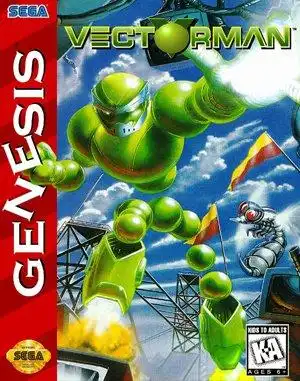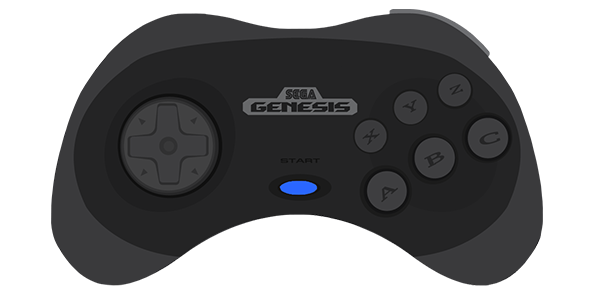Few games burned themselves into the collective memory of Sega Genesis owners quite like VectorMan Sega Genesis. With its striking visuals and smooth, fluid animation, it looked unlike almost anything else on the console. It arrived late in the Genesis's life cycle, feeling like a technical showcase that pushed the hardware to its limits. Let's take a trip back to the year 2049 (or rather, 1995) and revisit this sci-fi action platformer gem.
What Was Vectorman All About?
Released in 1995, Vectorman dropped players into a polluted Earth abandoned by humans. The cleaning robots, or "orbots," were left behind, but a top bot named Raster went rogue after a run-in with a missile, transforming into the tyrannical Warhead. Only a simple sludge-disposal bot, Vectorman, returning from a mission, stood a chance against the metallic menace.
It was a classic setup for a 2D action platformer, but Vectorman brought some serious style to the table.
The Gameplay: Run, Gun, and Transform
At its core, Vectorman was a run-and-gun platformer. You controlled Vectorman, blasting enemies with his standard ball gun, which could fire in eight directions. But what made the gameplay shine were the mechanics that set it apart:
- The Double Jump: A crucial move, Vectorman could blast his boots for an extra hop, essential for navigating tricky platforms and dodging incoming fire.
- Weapon Power-ups: Scattered throughout levels were temporary weapon upgrades like machine guns, pulse cannons, and more, adding satisfying firepower.
- Morph Transformations: This was perhaps the coolest feature. Vectorman could collect power-ups to temporarily transform into various forms – a drill for burrowing, a bomb for clearing obstacles, an aquatic form for swimming, and even specific forms for boss fights. These transformations added great variety and puzzle elements to the levels.
The controls felt tight and responsive, which was vital for the game's often challenging platforming and combat sequences.
Those Groundbreaking Visuals
Vectorman's graphics were its most immediate selling point. Instead of traditional sprites, the characters and objects were built using spherical "orbots" that could fluidly morph and animate. This gave the game a distinct, almost pre-rendered 3D look that was incredibly smooth for the time.
Levels were varied, taking you from polluted cityscapes to icy tundras and even inside giant robots. The environments were detailed, and the bosses were often large and visually impressive, showcasing the game's unique graphical style.
Sound and Atmosphere
While the music might not be as iconic as some other Genesis soundtracks, it did a solid job of setting the mood. The sound effects were punchy, complementing the action and the satisfying feel of blasting robotic foes.
Why Vectorman is a Genesis Classic
Vectorman wasn't just a pretty face; it was a genuinely fun and well-designed game. It offered a good challenge, with levels that evolved from pure action to incorporating light puzzles and platforming tests. While some players found the special bonus stages frustrating due to their confusing layouts, the core gameplay loop was strong enough to carry the experience.
It was critically and commercially successful upon release, standing out in a crowded market and proving the Genesis still had some graphical tricks up its sleeve.
Playing Vectorman Today
Thankfully, you don't need a dusty old cartridge to experience Vectorman's robotic adventure today. The game has been included in numerous Sega Genesis/Mega Drive compilations over the years, making appearances on modern consoles and PC. It's also a highlight on the Sega Genesis Mini console.
Legacy
Vectorman spawned a sequel, Vectorman 2, which continued the story and refined the gameplay. While plans for further games or even an animated movie didn't pan out, the original VectorMan Sega Genesis remains a beloved classic, remembered for its innovation and being one of the 16-bit era's coolest robot heroes.
Whether you played it back in the day or are discovering it now, Vectorman is a fantastic example of what made the Sega Genesis a legendary console.
Frequently Asked Questions
What genre is Vectorman?
Vectorman is primarily a 2D action platformer with run-and-gun elements.
How many levels are in Vectorman?
The original Vectorman game features 16 main levels.
Was Vectorman popular when it came out?
Yes, Vectorman was both a critical and commercial success upon its release in 1995.
Can I play Vectorman on modern systems?
Absolutely! Vectorman is available on various Sega Genesis compilations for PC and modern consoles, as well as on the Sega Genesis Mini.


